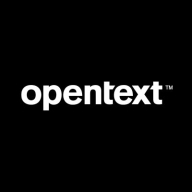

OpenText SiteScope and New Relic are two prominent monitoring solutions frequently compared by tech buyers. Analysis indicates that users appreciate OpenText SiteScope's robust infrastructure monitoring, but many favor New Relic's comprehensive feature set and user-friendly approach, leading to overall higher satisfaction.
What features are offered by OpenText SiteScope in comparison to New Relic?OpenText SiteScope offers real-time monitoring, extensive alerting capabilities, and robust infrastructure monitoring. New Relic is known for deep application performance monitoring, diverse integration options, and features that align well with modern cloud environments.
What areas of improvement can be found in OpenText SiteScope in comparison to New Relic?OpenText SiteScope needs enhancements in scalability, improved documentation, and structural improvements. New Relic users seek better support response times, more cost-effective pricing tiers, and service enhancements.
How is the ease of deployment and customer service of OpenText SiteScope in comparison to New Relic?OpenText SiteScope's deployment is seen as straightforward but requires significant configuration. Customer service receives mixed reviews, with some users finding support less responsive. New Relic is praised for its simpler deployment process and broadly positive customer service, though some report delays in support responses.
What setup costs and ROI can be seen with OpenText SiteScope in comparison to New Relic?OpenText SiteScope is viewed as cost-effective for infrastructure monitoring, but some users feel the initial setup is complex. New Relic, despite higher costs, is often considered worth the investment for its advanced capabilities. Users generally perceive New Relic to deliver better ROI, offsetting its higher pricing with enhanced functionality.
| Product | Market Share (%) |
|---|---|
| New Relic | 4.1% |
| OpenText SiteScope | 0.7% |
| Other | 95.2% |


| Company Size | Count |
|---|---|
| Small Business | 65 |
| Midsize Enterprise | 50 |
| Large Enterprise | 65 |
| Company Size | Count |
|---|---|
| Small Business | 8 |
| Midsize Enterprise | 4 |
| Large Enterprise | 21 |
New Relic offers real-time application monitoring and insight into performance bottlenecks. Its customizable dashboards and APM integration provide efficient operational support, while server performance alerts ensure quick issue detection.
New Relic provides comprehensive monitoring of application performance, tracking bottlenecks across databases and front-end components. Users employ it for server and infrastructure monitoring, as well as analyzing key metrics such as CPU and memory usage. The solution's ability to integrate with tools like PagerDuty enhances incident management capabilities. However, users have expressed a need for improvements in query language simplicity, more detailed historical insights, and better mobile app monitoring support.
What are New Relic's most important features?In industries like e-commerce and financial services, New Relic supports application performance monitoring to enhance user experience and system reliability. Organizations leverage its insights for optimizing performance, particularly in server operations and infrastructure management. Its ability to monitor API failures through synthetic monitoring is crucial for maintaining high service levels.
OpenText SiteScope is an agentless monitoring program that tracks the availability and performance of distributed IT infrastructures such as servers, network devices and services, applications and application components, virtualization software, operating systems, and other IT enterprise components.
OpenText SiteScope is an autonomous hybrid IT monitoring system that can monitor more than 100 different types of IT components in real time, thanks to a lightweight and highly customizable remote access architecture.
With OpenText SiteScope, IT teams can get the data they need to keep on top of problems and eliminate bottlenecks before they become major concerns.
OpenText SiteScope can reduce total cost of ownership (TCO) by utilizing agentless technology, which eliminates the need to install and monitor agents on each box. Manual activities can be automated, and teams can save time and effort by using pre-packaged solution templates.
OpenText SiteScope Features
OpenText SiteScope has many valuable key features. Some of the most useful ones include:
We monitor all Application Performance Monitoring (APM) and Observability reviews to prevent fraudulent reviews and keep review quality high. We do not post reviews by company employees or direct competitors. We validate each review for authenticity via cross-reference with LinkedIn, and personal follow-up with the reviewer when necessary.